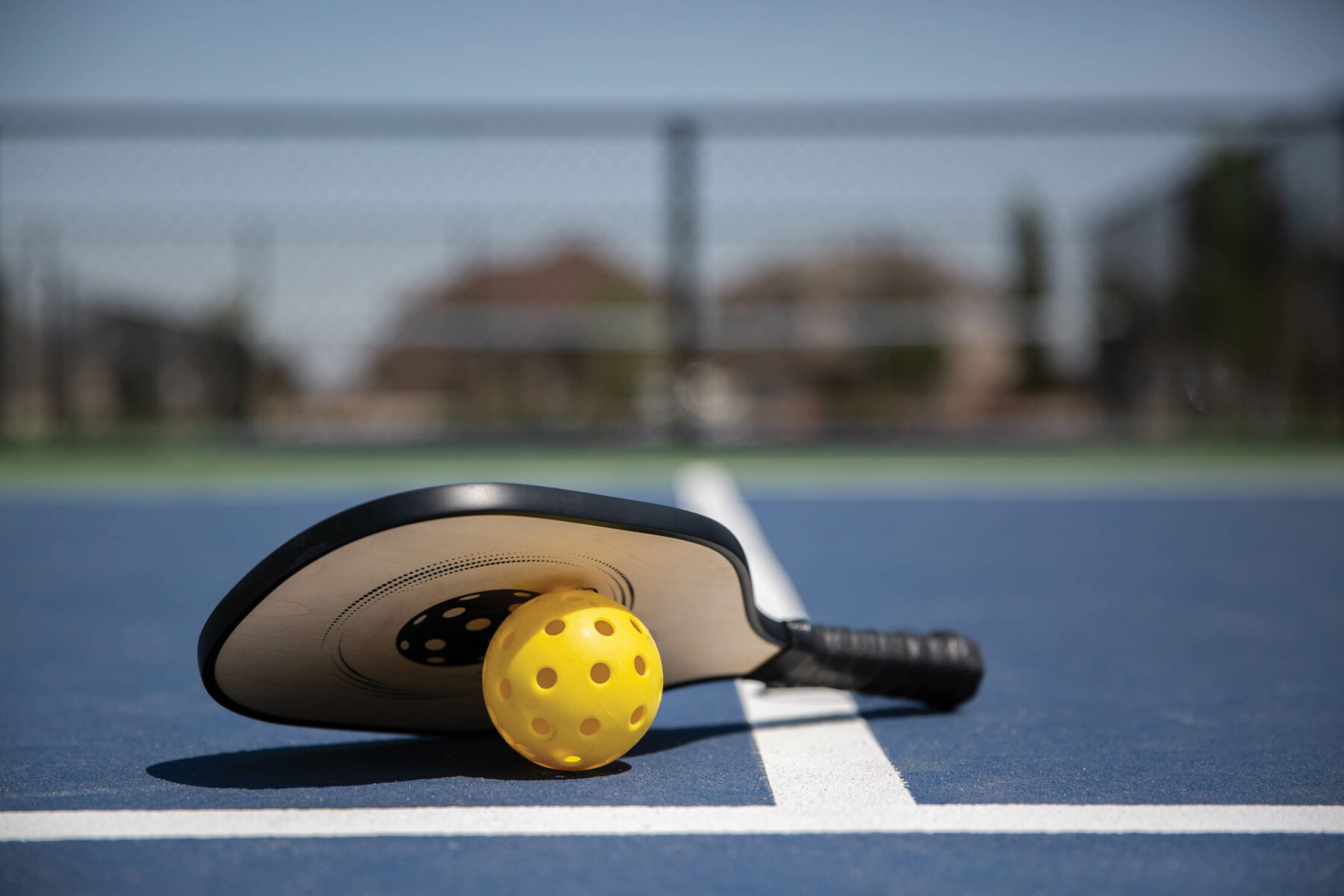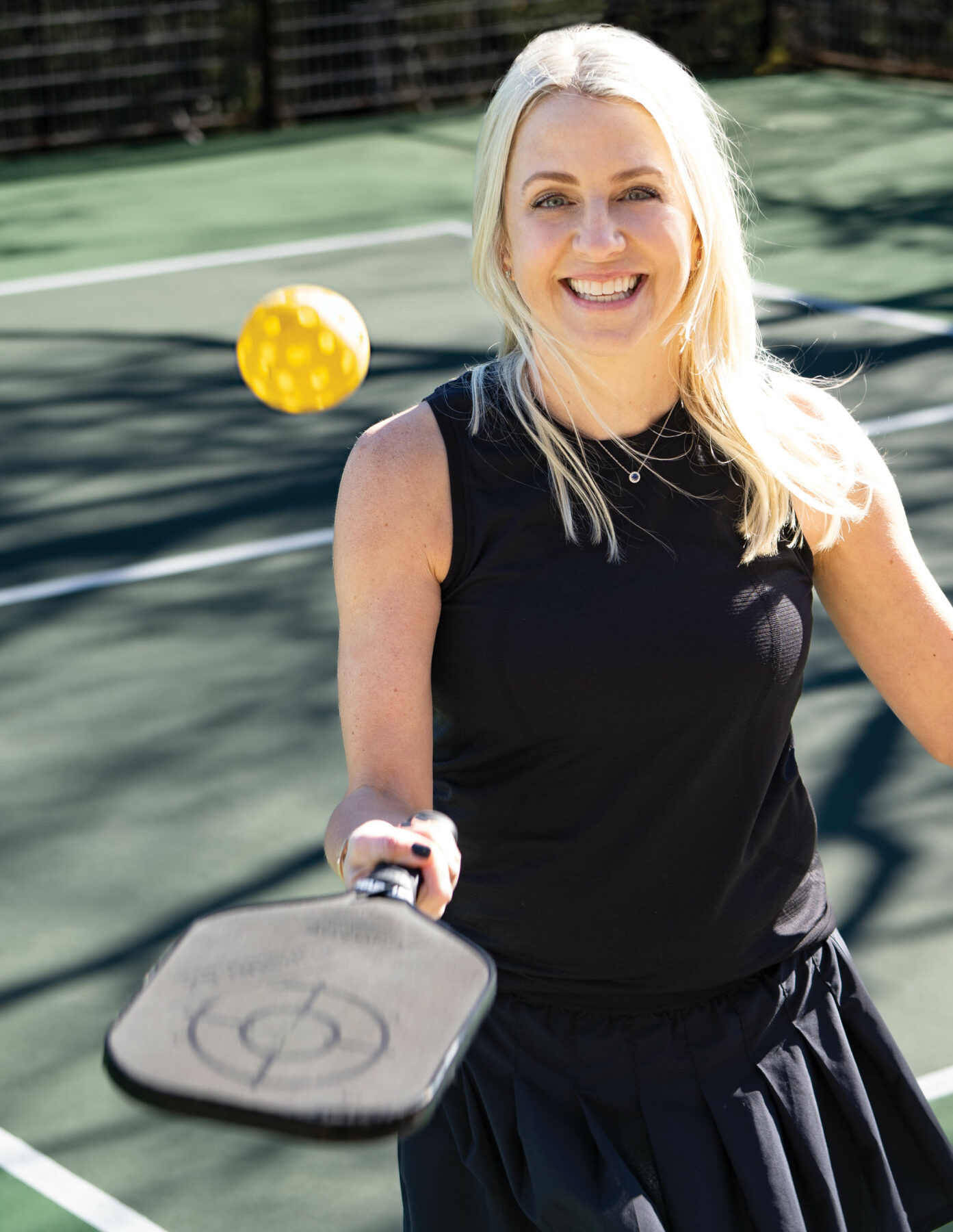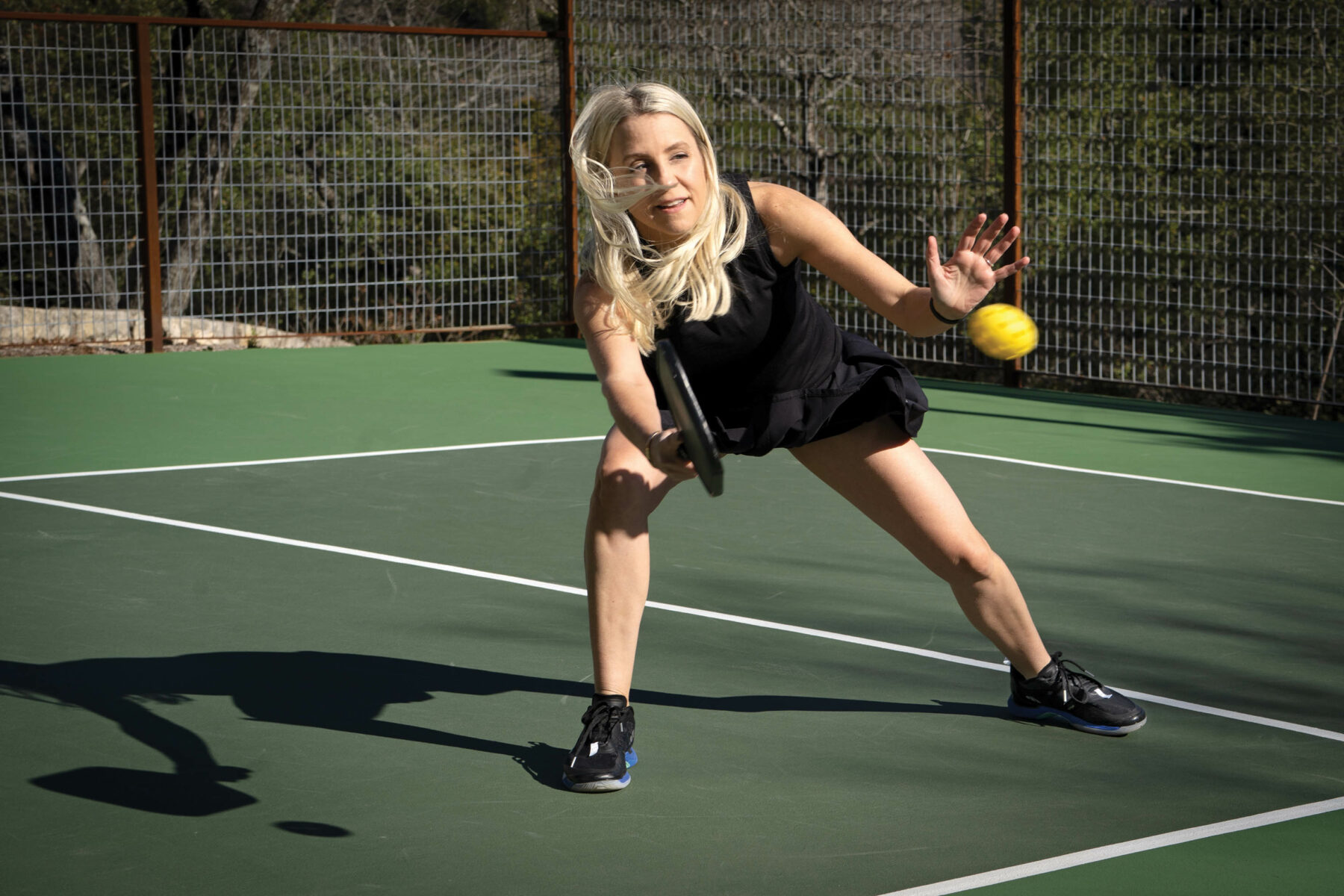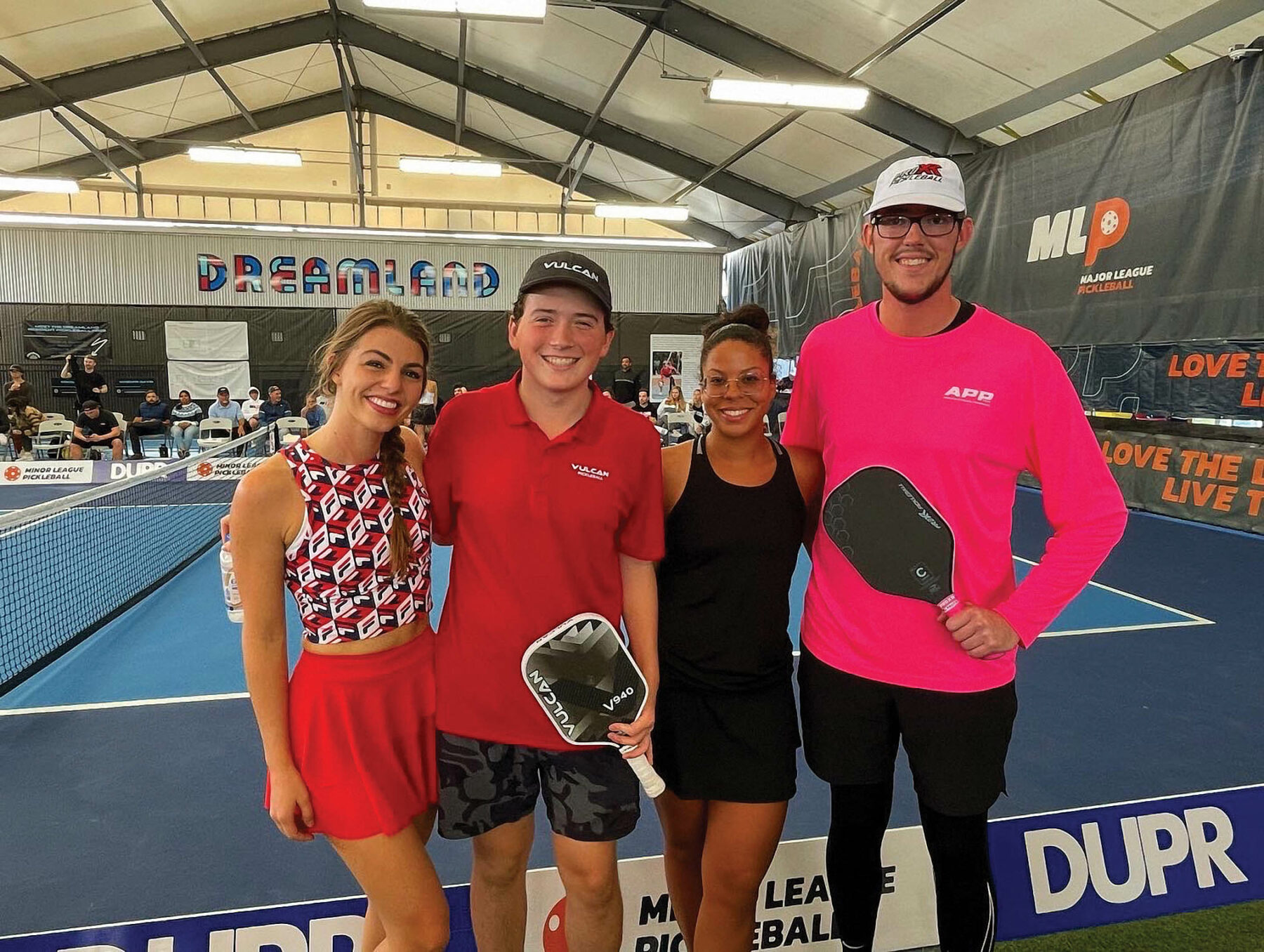Uncovering the Success of Pickleball

Is Austin’s booming pickleball scene an overnight success, a pandemic-induced solution for boredom and social distancing?
This paddle sport played indoors and outdoors on badminton-sized courts is currently the fastest-growing sport in America. All over Austin, players gather on basketball and tennis courts with new lines and portable nets or on brand-new pickleball-only courts created to meet demand. From retirement communities to cul-de-sacs, private clubs to public parks, you’ll hear the unique “pock” sound of a wood and plastic paddle on a plastic ball — and a lot of laughing.
For the record: I’ve never swung a pickleball paddle. Before deciding that discredits me, please consider it my objectivity because, at the end of this, you may want to pick up a paddle and holler, “Zero — zero — one.”
What’s the Deal with Pickleball?
You may ask yourself, “Where have I been?”
Many players discovered or returned to pickleball during the pandemic. But this viral, infectious game — which several people have described as both “fun” and “dumb” — has been building momentum in Austin for the last decade.
And it changes people’s lives personally and professionally.
Austinite Laura Stangl discovered pickleball after seeing people playing it. In 2021, she bought a starter kit online and tried learning it via YouTube. A friend in her residential building organized lessons with a certified instructor, Matt Boyett, and her pickleball fever set in.
Stangl says there’s always someone in her high-rise ready to play anywhere, from Pan American Park Courts to Austin High School or indoors at the South Austin Recreation Center.
“To be honest, I thought (pickleball) was going to be easy because it had a reputation as an older person’s sport,” Stangl says. “Heck no! (I) love that you see a lot of younger people playing.”
And true to pickler culture, Stangl introduced her 20-something son to the game, and he told his friends.
That’s how it happens — pickleball is contagious. YouTubers The Holderness Family described pickleball fever in five stages: judgment, curiosity, reluctance, commitment and obsession. (I’ll add a sixth: evangelism. Reporting on this story, I received at least two invitations to play.)

Courtesy of Katie Russell Newland
Hannah Johns is a younger “pickler” who works for the Professional Pickleball Association (PPA) and its PPA Tour. As a former tennis player, she learned to play pickleball in Florida in the spring of 2020. She says pickleball was a solution for pandemic boredom.
Johns began watching local tournaments and reporting on the sidelines for fun, which created her next job: courtside reporter. In 2020, she traveled across the country creating content at events and managing media opportunities for the PPA. She moved to Austin in 2022 and now enjoys playing tournaments, though most of her Austin play is social and recreational due to the travel demands of her job.
“Pickleball is a nice mixture of social, recreational and competitive,” Johns says. “And it’s easy to get addicted to it really fast. It becomes a social circle and lifestyle. Coming out of COVID, it was an easy way to segue back into life.”
Johns says another major reason the sport spread so fast is because of how inclusive it is.
“You can make (pickleball) highly athletic or highly unathletic,” Johns says.
Katie Russell Newland, a former University of Texas at Austin professor and current author, says pickleball changed her life. She discovered the game in Arizona in 2019 but stopped playing during COVID. In December 2021, she visited a high school gym where she knew no one and put her paddle in a stack to play.
“(Pickleball) is the only time during my day I am fully in the present moment. My mind, body and spirit are singularly focused,” Newland says. “It’s my mediation, the space between my over-active thoughts. And because of that, pickleball has impacted my fitness level, my sense of community and my career path.”
The Sport For All
So, how did this “older person’s sport” become the sport for all ages?
Its sweet spots get most of the credit — easy to learn and play, sociable with a non-stop drip of dopamine. Plus, it provides the opportunity to compete.

Courtesy of Katie Russell Newland
Amy Owen is part owner of 002 Pickleball, which creates “amateur tournaments the pro way.” Owen also works at Quarries Sports & Recreation where she started playing pickleball nine years ago when The Quarries Gym added pickleball lines to its gym floor. Back then, they invited players from the retirement community Sun City Georgetown to show them how to play.
Like others, Owen played more during COVID, which stoked her competitive spirit. Many players agree that’s part of its popularity.
“(Pickleball) brought back a sense of competition that I was losing as I got a little older and didn’t have the desire to play other sports competitively,” Owen says. “I’ve always connected with people through sports, so this has given me a new way to continue to make friends and be social.”
So is Austin really the center of the expanding pickleball universe? Johns says Austin is one of the pickleball hubs because many of the top 20 pros live here including Ben Johns, Lea Jansen, Zane Navratil, Julian Arnold, Lauren Stratman and Lina Padegimaite. On top of that, add Steve Kuhn who owns the rec sports complex Dreamland in Dripping Springs, which has 16 dedicated pickleball courts. Kuhns also founded Major League Pickleball (MLP) in 2021, which merged with the PPA’s VIBE Pickleball League last fall.
Creating Culture
Where attention goes, money and energy flow. Restaurants like Bouldin Acres and The Pitch cater to recreational and amateur competitive players, while clubs and facilities outside of Austin host pro-tour events.

Courtesy of Hannah Johns
So, what’s ahead for Austin picklers in 2023? Players agree that reservations for courts are now recommended.
“Pickleball has changed a lot in Austin over the last few years,” says Maggie Brown, CEO of Austin-based Recess Pickleball, which markets colorful custom pickleball paddles. “The courts are almost always busy at all times of the day. There are more public courts than there were two years ago.
With Austin being a hot spot for creative businesses popping up that combine activities with drinks, Brown suspects within the next two years, there will be more pickleball courts paired with a bar/restaurant concept.
Pickleball continues to grow in all directions. Non-competitive rec players appreciate investments in more courts, better equipment, more stylish clothing (thank you, Norma Kamali), and travel and leisure opportunities like retreats and vacations with pickleball. Competitive amateur and pro players welcome the growth of tours, events, teams and the “professionalization” of the sport — marked by more qualified trainers and coaches as well as more media time and bigger prizes.
This dichotomy is consistent with the sport itself; it can be a “fun and dumb game” for 15 minutes or a 3-hour competitive match.
Either way, picklers say, you’re going to have a ball.
About the Author
Laura Bond Williams is a certified Pilates teacher and professional life coach helping clients discover new ways of moving through life with ease and awareness. She loves a good Broadway dance class or “Thriller” flash mob and is happy to take the stage anywhere, from the Long Center to a parking lot.






